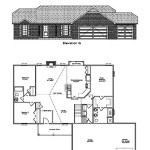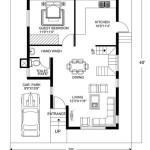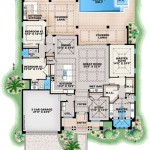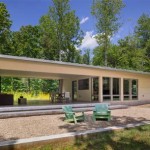Essential Aspects of Modern Japanese House Floor Plans
Modern Japanese house floor plans seamlessly blend traditional design principles with contemporary style, creating functional and aesthetically pleasing living spaces. Here are the fundamental aspects that define the unique character of these homes:Open and Flowing Layout
: Japanese homes prioritize fluidity, with open floor plans that allow natural light to penetrate deep into each room. This design emphasizes interconnectedness and a sense of spaciousness, even in compact dwellings.Tatami Rooms
: Traditional Japanese homes feature tatami rooms, which are covered in woven rice straw mats. These rooms are used for various activities, including sleeping, dining, and meditation. They create a calming ambiance and provide a designated space for relaxation.Shoji Screens
: Sliding shoji screens are essential elements of Japanese architecture. Made of translucent paper, they filter light, providing privacy while maintaining a connection to the outdoors. They are commonly used to separate spaces or create flexible room configurations.Genkan
: The genkan is an entryway that serves as a transitional space between the outside world and the interior of the home. It features a raised floor and is used for removing shoes before entering the main living areas.Built-in Storage
: Modern Japanese homes incorporate ample built-in storage, such as closets, cupboards, and drawers. This helps to maximize space and maintain a clean and organized interior.Natural Materials
: Japanese homes often use natural materials like wood, stone, and bamboo. These materials bring warmth and a connection to nature into the home, creating a serene and inviting atmosphere.Energy Efficiency
: Modern Japanese homes prioritize energy efficiency, utilizing features such as double-paned windows, insulation, and solar panels. These measures reduce heating and cooling costs, promoting sustainability and comfort.Multipurpose Spaces
: Japanese homes often incorporate multipurpose spaces to maximize functionality. For example, living rooms can double as dining areas, and bedrooms can expand to accommodate guests using futon mats.Connection to the Outdoors
: Japanese homes emphasize a connection to the outdoors through elements like courtyards, gardens, and balconies. These spaces provide natural light, ventilation, and a sense of tranquility within the busy urban environment.
House Floor Plan Design Plans Traditional Japanese Container Home Style

Japanese Home Design Ideas Pictures 331 Sqm Homestyler

House In Akashi Has Courtyards For Growing Fruit And Drying Laundry Modern Floor Plans Japanese

Japanese House Floor Plan Courtyard Google Search Traditional Style Plans

Japanese Home Design Ideas Pictures 331 Sqm Homestyler

Japanesque House Floorplan Japanese Style Japan Design

The Layout Of Ground And First Floor A Traditional Japanese House Scientific Diagram
In Praise Of The Japanese Imagination Houseplans Blog Com

The Ant House Double Structure Pleasure Japanese Architecture

The Sims Resource Modern Japanese House








